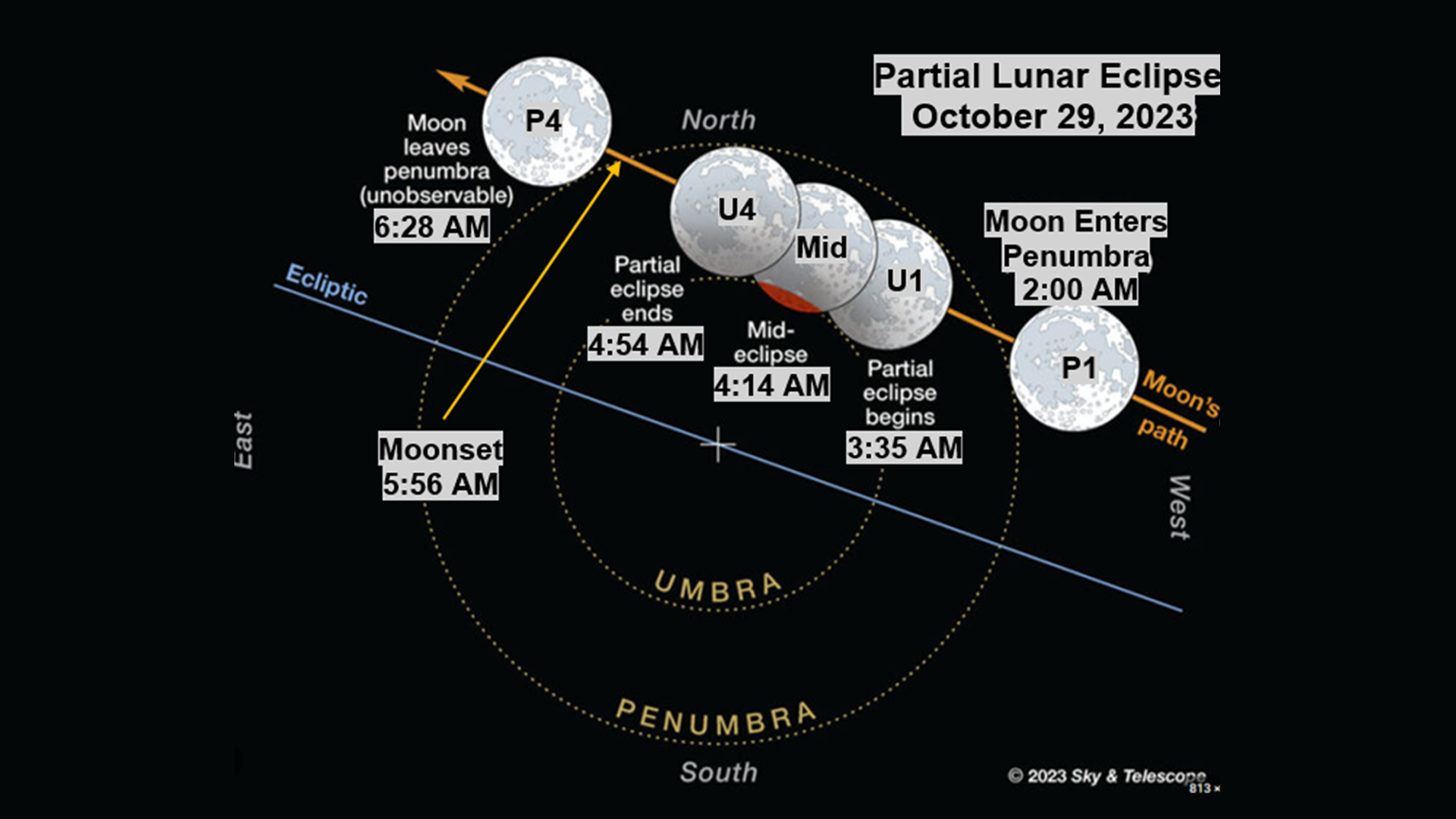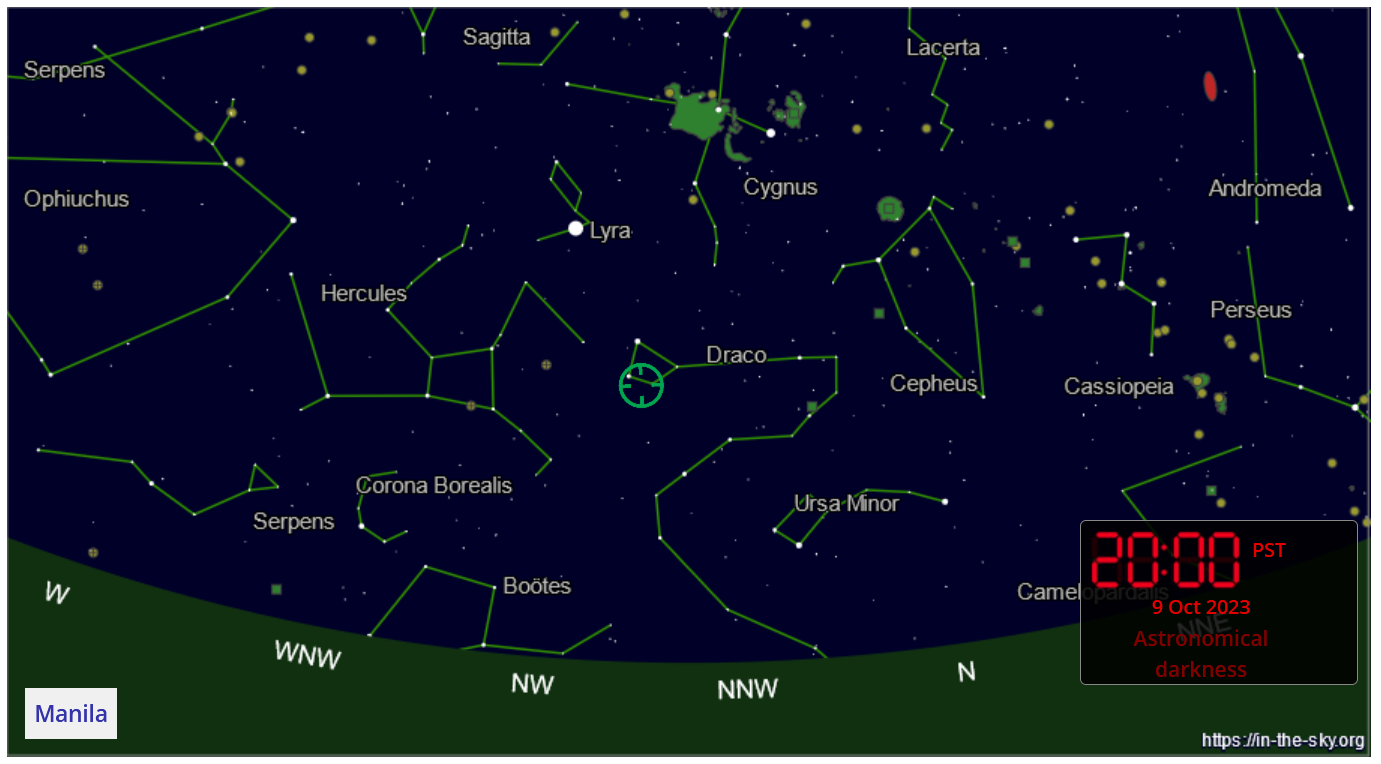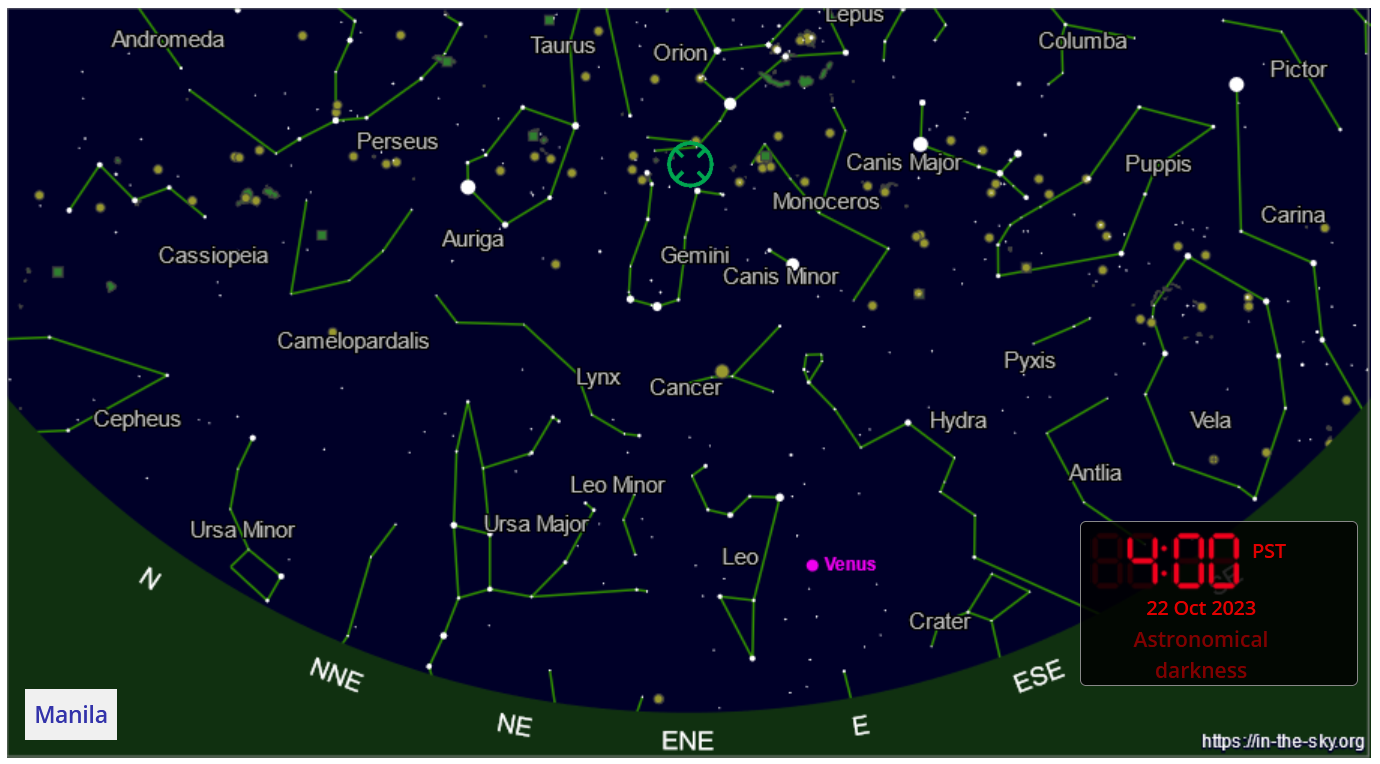Partial lunar eclipse, meteor showers visible in October --- PAGASA
The Philippine Atmospheric, Geophysical, and Astronomical Services Administration (PAGASA) announced the astronomical events that will be observable in October.
On Oct. 29, a Partial Lunar Eclipse will be visible in Metro Manila and other parts of the country for about 1 hour and 19 minutes, said PAGASA.

"We recommend to look at the western sky in the early morning hours of Oct. 29," said PAGASA.
PAGASA explained that the penumbral phase will transpire in Metro Manila at 2 a.m., which will be followed by the partial lunar eclipse at 03:35 a.m.
The Maximum Eclipse will happen at 04:14 a.m. while the partial umbral phase will last until 04:54 a.m., said PAGASA.
"During the maximum eclipse, the umbral shadow cast by the Earth will obscure 12% of the Moon’s disk," PAGASA added.
PAGASA said that the moon will set at 5:56 a.m. and will exit penumbra at 06:28 a.m.
The eclipse will also be perceivable "in any location where the Moon is above the horizon" including Europe, most of Asia and Africa, eastern Americas, and Australia.
PAGASA suggested that wearing binoculars will give the public an "excellent" experience in observing the eclipse.
"Contrary to solar eclipses, observing a lunar eclipse is safe and requires no protective eyewear," it said.
Meteor showers
PAGASA said that the "Draconid Meteor Shower" will be active from Oct. 6 to Oct. 10, and will be at its peak on Oct. 9.

"At its peak activity, the Draconid meteor shower will produce around 10 meteors per hour," said PAGASA.
PAGASA said that the meteor shower is active after the sun sets up until 11:41 p.m.
Meanwhile, PAGASA noted that the "Orionid Meteor Shower" will be active from Oct. 2 to Nov. 7, with its peak activity on Oct. 22.
PAGASA estimated the Orionid Meteor Shower to have 15 meteors per hour.

"The Orionids’ best display will be after its radiant constellation Orion fully rises around 9:56 p.m. on Oct. 21 to the dawn of the following day," it said.
PAGASA said meteor showers can be seen by the naked eye. "Choose a dark location away from city lights with a clear sky and no moon to maximize the viewing experience," it added. (Lizst Torres Abello)